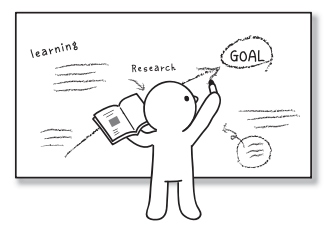Learning Design/OG
| Learning Design | |
| Contributors | Takashi Iba, Toko Miyake |
|---|---|
| Last modification | June 5, 2017 |
| Source | Iba & Miyake (2010)[1]; Iba (2010)[2] |
| Pattern formats | OPR Alexandrian |
| Usability | |
| Learning domain | |
| Stakeholders | |
Also Known As: Design Your Learning (Design Your Learning)[3]
• Always when you want to learn
It is not easy to learn how to learn, while it is an essential ability in a complex changeable society.
• Humans are not able to learn everything because their time and memory are limited.
• There are several ways to study.
• People who learn effectively have a knack for good learning, which is independent on their fields or themes.
Learn the ‘knack’ of learning from the experienced learners, and design your way of learning based on them.
• You can work on your activity with learning patterns which tells you the knack of effective learning.
• First, read roughly whole patterns to understand what learning patterns is like, especially the first half of each pattern; pattern name, introduction, illustration, and context. It is better to remember the pattern name and the illustration.
• Read the detail of patterns in which you are interested. There are description of Problem, difficulties why the problem is a hard to solve as Forces, Solution, and Actions which are for solving the problem.
• You can find a learning pattern according to your situation by using the list of Contexts.
• Use Pattern Names of their learning patterns as a common language, when you talk about learning with other students or teachers.
Learning Design is important to do Making Opportunities for Learning (Making Opportunities for Learning). For cultivating the opportunity, keep the tips of Creative Learning (Creative Learning) in mind, and you can learn with excitement. Open-Process Learning (Open-Process Learning) helps you recognize the significance of communities that you are in.
References
- ↑ Iba, T., & Miyake, T. (2010). Learning Patterns: a pattern language for creative learning II. In Proceedings of the 1st Asian Conference on Pattern Languages of Programs (p. 4). New York:ACM.
- ↑ Patlet mentioned in Iba, T. (2010). Designing a Pattern Language for Creative Learners.
- ↑ Iba, T., & Sakamoto, M. (2011). Learning patterns III: a pattern language for creative learning. In Proceedings of the 18th Conference on Pattern Languages of Programs (PLoP 2011) (p. 29). New York:ACM.
